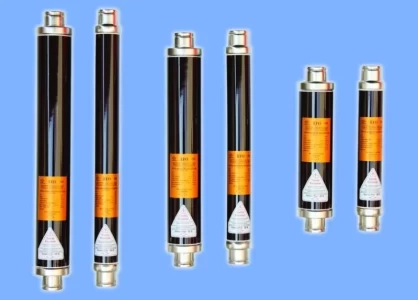Innovations in Low Voltage Fuse Technology
Low voltage fuses are essential components in electrical systems, providing protection against overcurrent and preventing damage to equipment. Recent advancements in materials science and design techniques have led to significant improvements in the performance and reliability of these fuses. This article explores the latest innovations in low voltage fuse materials and design, and how they enhance the functionality and efficiency of electrical protection systems.
Traditional Fuse Materials and Limitations
Traditional LV fuses typically utilize copper or silver for their fuse elements. These materials offer good conductivity but have limitations:
Temperature Sensitivity: The melting point of these materials dictates the fuse's operating range. Extreme temperatures can affect their performance and necessitate derating.
Aging Effects: Over time, oxidation and other factors can degrade the fuse element, potentially leading to altered tripping characteristics.
Limited Interrupting Ratings: Traditional materials may not offer the highest interrupting ratings required for modern electrical systems with increased fault currents.
Advancements in Fuse Materials
High-Performance Conductive Elements
The heart of a fuse's functionality lies in its conductive element, which melts under excessive current, breaking the circuit. Innovations in materials have led to the development of high-performance conductive elements that offer improved electrical characteristics, such as faster response to overcurrent conditions and better durability, enhancing the protective capabilities of low voltage fuses.
Enhanced Insulation Materials
The insulation material in fuses is crucial for preventing electrical faults and ensuring safety. Recent advancements have introduced materials that provide superior insulating properties, higher thermal resistance, and greater mechanical strength. These improvements help fuses withstand harsh operating conditions and extend their operational life.
Design Innovations in Low Voltage Fuses
Compact and Efficient Designs
Modern low voltage fuses feature compact and efficient designs that allow for easy integration into electrical systems without compromising performance. These designs often include features that facilitate quicker and safer replacement, such as integrated handles or clips, reducing maintenance time and improving user safety.
Integration with Smart Technology
There is a growing trend of integrating smart technology into low voltage fuse systems. These fuses can monitor and report on their own status, including wear level and fault occurrences. This integration allows for real-time monitoring and predictive maintenance, improving system reliability and reducing downtime.
Performance and Reliability Enhancements
Improved Fault Response
Innovative design techniques have led to fuses with improved fault response characteristics, ensuring rapid disconnection during overcurrent events. This quick response is crucial for protecting sensitive electronic equipment and maintaining system integrity.
Durability and Longevity
The combination of advanced materials and design optimizations has resulted in low voltage fuses that offer enhanced durability and longevity. These fuses can endure more cycles of fault conditions and normal operation without degradation, providing reliable protection over a longer service life.
Challenges and Considerations
Cost Implications
While these innovations offer significant benefits, they often come at a higher initial cost compared to traditional fuses. The decision to implement these advanced fuses must consider the balance between upfront costs and long-term savings in maintenance and equipment protection.
Compatibility with Existing Systems
Integrating advanced low voltage fuses into existing electrical systems may present compatibility challenges. It's crucial to ensure that these fuses can operate effectively within the established system parameters and are compatible with other protective devices.
The field of low voltage fuses has seen remarkable advancements in materials and design, leading to significant improvements in performance and reliability. These innovations not only enhance the protective capabilities of fuses but also contribute to the overall efficiency and safety of electrical systems. Despite the challenges related to cost and compatibility, the benefits of these advanced fuses, including better performance, enhanced safety, and greater reliability, make them a compelling choice for modern electrical protection solutions.

